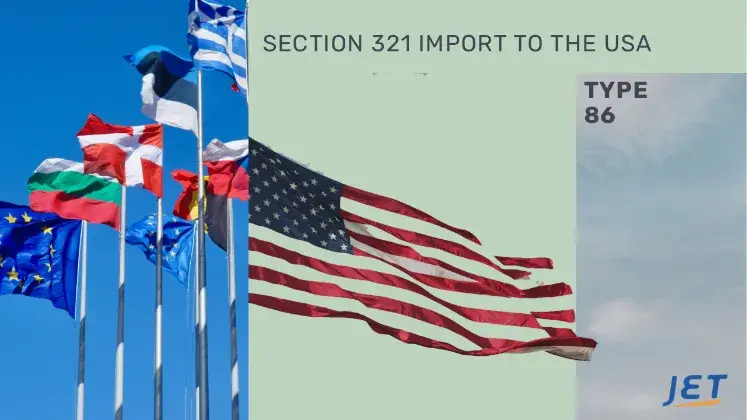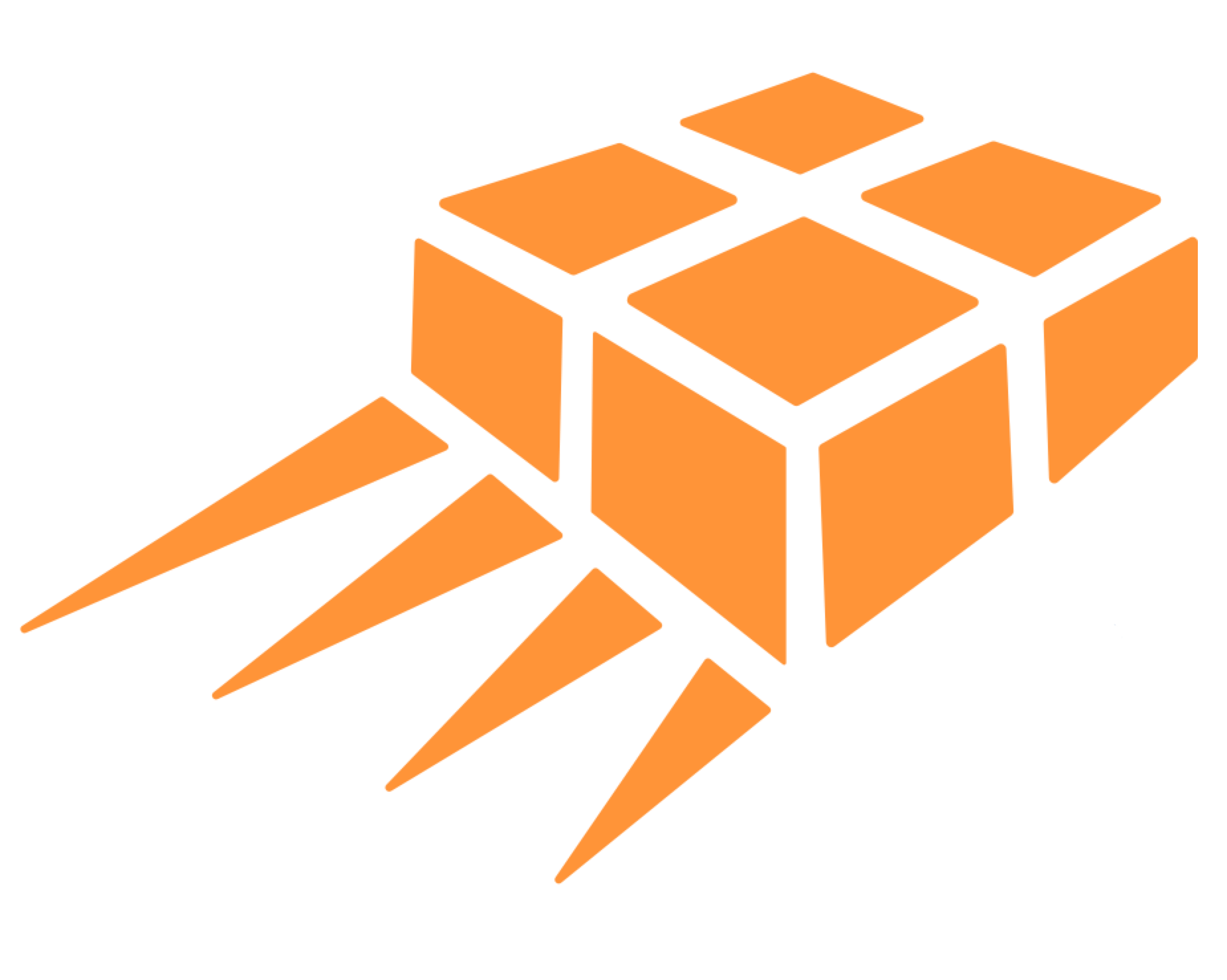
E-Commerce Parcel Direct Import to USA via Section 321
There is incredible opportunity for companies to ship to the USA via section 321 / up to $800 orders. Section 321 means orders valued under $800 can be simply imported to the USA duty free without duty and taxes.
Historically, de minimis levels were established by governments to save processing costs. Or put another way, the level at which it cost more to process the duty and taxes than were actually collected.
IMPORTANT: 2025 updates to Section 321
Develop your own direct shipping to the USA via Section 321
International sellers and online merchants need to develop best in class shipping solutions to the USA. This simply involves air freight to major ports of entry, section 321 duty free clearance and strategic injection points to the USPS.
There are for basic types of Section 321 entries:
- Express consignment (ECCF)
- Cargo consignment (CFS)
- Type 86 ACE / automated broker interface
- via Canada cross border
Jet assists retailers and online merchants can gain control. lower costs and improve delivery times by taking their parcel logistics processes in house. Jet provides transparency, industry insights and decades of experience to your logistics team.
Disclaimer: The information in Jet Worldwide online content, including this post, is for general information only
Measuring the benefit and loss of de minimis levels
Argument for a low deminimis level:
The main argument for maintaining a low deminimis level is to help national retailers compete against international on-line merchants. National retailers complain about having to pay higher taxes (especially local sales tax) than internet sellers.
Argument for a high deminimis level:
Advocates of a high deminimis most often cite free trade benefits such as giving consumer and businesses a greater choice and lower cost.
Watch our video: Section 321 explained
Benefits for low value shipments beyond lower duty
With the prevalence of free trade agreements, duty costs are no longer the major concern. The biggest obstacle for importing is myriad of import regulations - made more difficult by security intiatives. In most countries, the real benefit of importing low value shipments is the ease of processing. The value in simpler processing is actually greater than the savings in duty.
What is Section 321?
US Customs allows most individual orders valued under $800 USD to be entered and cleared duty free into the USA. This entry type is known as a Section 321 Informal Entry. Using this entry type, importers can consolidate all their qualifying orders under one entry without H.S. Codes and benefit from duty free entry.
USA Section 321 Import plus last mile delivery via USPS
Section 321 entry type in the USA allows for efficient high volume duty free parcel import to the United States. This can be accomplished via four entry types:
- Section 321 Express Consignment
- Section 321 Cargo (Container Freight Station / CFS)
- Section 321 type 86 (HS code required)
- Section 321 Canada / USA cross border
USA Section 321 Express Consignment
Using an Express Consignment Clearance Facility / ECCF, retailers benefit from express handling and clearance. While it is important to build in the capability in case of a general customs slow down or work stoppage), this method is costly (over $1 US per consignment customs reimbursable fee). Goods cleared via ECCF are subject to Part 128 of the Code of Federal Regulations.
USA Section 321 Cargo/ CFS
Most facilities that have an ECCF also have access to cargo clearance. The processes are essentially the same but without the customs fee mentioned above. Shippers often mix and match use of CFS and ECCF to balance the need for lower costs with faster clearance.
USA Section 321 Type 86
Using traditional brokerage clearance systems, retailers can take advantage of type 86 entries. The format requires application of HS codes. This system is available for all forms of conveyance but seem to be subject to a high level of inspection and delay.
USA Section 321 Canada to USA Cross Border
Many retailers are choosing to ship their goods via Canada to take advantage of truck border crossings to the USA. The goods can either be transported in bond direct from the arrival airport to the border or imported and warehoused in Canada. Many are choosing to import the goods to Canada that benefit from Canadian duty free entry under CPTPP (which Canada is a member of).
Process for Importing Low Value Shipments to the USA
“Express Clearance versus Freight Clearance”
Express Parcel Import:
- Traditionally, parcel shipments being imported to the USA have been imported using “Express Consignment” clearance processes.
- High volume express parcel importing requires use of FedEx/UPS/DHL, or an independent clearance facility in New York, Los Angeles or Miami (NYACC, IBC, Micom).
- Express clearance processes are highly developed and efficiently manage millions of parcel imports. However, express consignment operators are required to pay over $1 for every parcel imported as a fee to US Customs to support the processes.
- The $1+ per parcel (HAWB) customs fee is meant to reimburse customs for all their costs incurred at their importing hub or express consignment carrier facility (ECCF).
Cargo Parcel Import
Parcel Import of low value shipments has traditionally been the domain of express carriers. However, the growth of e-commerce parcels has made available new processes at certain ports of entry - most notably JFK - that allow for high volume parcel importing using a cargo facility.
The customs designation for bonded cargo facilities is called a “Container Freight Station” or CFS.
Manifest Submission versus Customs Entry
Beyond the duty free status of low value shipments into the USA, the key advantage is being able to clear shipments without the costs and liability associated with a customs entry.
In the express environment, Express Consignment Operators Express or ECO’s are authorized to clear low value shipments via a “manifest submission.” High value shipments (above the deminimis) require an official customs entry by the importer of record or a licensed US Customs broker.
Manifest submission via Container Freight Station?
Currently, tens of thousands of low value parcels per day are imported via CFS facilities. It is unclear in the regulations as to who is can submit manifest submissions outside the express clearance environment.
Other blogs on e-commerce parcels to the USA:
Although the Express Consignment Operator (ECO) designation defined under the (Part 128) express regulations, it is possible that ECO’s are being allowed to submit low value manifests using a container freight station. Another possibility is that US Customs brokers are given permission to submit low value manifests for clearance through their Automated Broker Interface (ABI) or ACE system.
Incredible Opportunity for E-Commerce Imports to the USA:
Regardless of whether via express or cargo clearance, the increase in the de minimis value will have a profound impact on a e-commerce flows to the USA.







